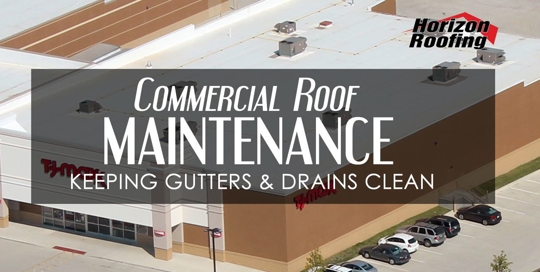There is a lot of importance in inspecting your facility roof, performing periodic maintenance and making vital repairs before the cold weather sets in. In this post, we are going to focus on just how damaging natural debris can really be. All those beautiful autumn leaves can wreak havoc on a facility roof.
Debris Buildup and Unintended Consequences
All it takes is a little moisture and those feather-light leaves biodegrade into a soggy, heavy mass that clogs drains, blocks scuppers and invites mold, fungi, and mildew. If not promptly removed, leaves and debris can lead to backed-up water, which increases the live load on the roof deck. Standing water, just 1-inch deep, adds five pounds per-square-foot of live load on the roof assembly. Over time, standing water can leach the pliable properties out of some single-ply membranes, reducing flexibility and the life of the roof.
In the winter, ponding becomes critical when pooling water freezes and expands, forcing its way into tiny cracks or under flashings. Additional ice weight can cause structural damage and expensive repairs, or – in extreme cases – even roof collapse.
Preventative Maintenance Reduces Risk
Maintenance crews should be trained to look for leaves and other debris around drains and scuppers. During the fall, frequent checks and prompt debris-removal are necessary to prevent buildup and blockage. Areas of standing water could indicate blocked drains. Partially blocked drains allow water flow, albeit sluggishly, so even if you don’t see standing water that doesn’t mean you don’t have a drainage problem. Staining of the roof’s surface could indicate previous ponding, which is also a red flag. Not every problem caused by leaves and other debris is apparent to the untrained eye so it’s vital to have a qualified roofing professional take a look.
Drains and gutters should be cleared now — before frigid temperatures can turn soggy leaf debris into frozen blockages.
Professional Inspection
In addition to disposing of leaves and debris, a qualified roofing specialist will water-test both internal and external drains and inspect gutters and downspouts. While he’s at it – he’ll check the little things that can escape the notice of a maintenance crew, such as examining strainers to ensure that they are in place and that the bolts holding them are secure. It takes a trained eye to recognize early problems with sealants, flashings, mortar, seams, and penetrations. Gutters and downspouts should be checked for sagging, loose connections and broken or missing fasteners.
Routine Inspections and Preventative Maintenance Programs Are the Keys to a Long Roof Life.
At Horizon Roofing, our customers get the most for their roofing dollar. For the peace of mind that comes with knowing your facility’s roof is in the best possible shape going into winter – give our office a call today to learn more about our Preventative Maintenance program at (770) 746-7611 or Request Commercial Roofing Service online.

